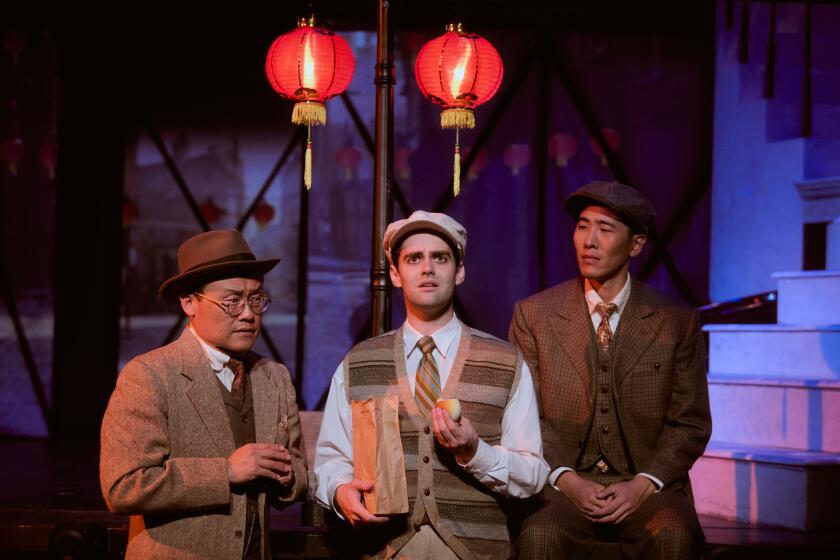Putting Up With Art : Christo Tells Umbrella-Raising Crew ‘It’s About Beauty’
The project area resembles a giant construction site and the wages are $4.25 an hour, but 430 workers trekked to the Tejon Pass on Thursday with the lofty goal of creating Art.
After six years of work on his latest gigantic outdoor project, the one-name artist Christo was on hand to welcome the people who will put the finishing touches on the local portion of his bi-continental installation “The Umbrellas: Joint Project for Japan and U.S.A.”
“This project is really about art,” Christo told the first group as they checked in to begin work. He had arrived Wednesday from Japan, where the other half of the project will be staged 75 miles north of Tokyo.
“It is not about agriculture, not industry,” he told the workers. “It’s about beauty.”
But before there is beauty, there will be sweat and dust. The workers, who came from all over the country to labor at minimum wage to help erect Christo’s project, will be spending the next five days in the arid mountains and fields of the area known as the Grapevine.
After checking in, they got a demonstration of how they will work in teams to lift the 488-pound umbrellas, fit them into the bases that already have been installed at the Christo-designated sites and raise them into an upright position using a method reminiscent of the famous Iwo Jima flag-raising picture.
If all goes according to plan, the teams will return to their umbrellas Tuesday at dawn to begin cranking them open, using a special handle. When done, 1,760 of the yellow umbrellas will stand on an 18 mile stretch of I-5, creating a spectacle for motorists.
Each umbrella is almost 20 feet tall and its canopy is more than 28 feet in diameter.
“Half the people in the country probably think this is a bunch of baloney,” said Roy Wilson, 73, of Santa Paula. Like several of the workers who signed up, he is retired.
“But I don’t care. To me this is art that is really exciting.”
His newfound friend, Corson Ellis, 62, heartily agreed. “Christo’s art is tactile,” said Ellis, an electronics engineer from New York City. “In our society we are getting so abstract that we don’t really reach out and touch anything. You certainly can’t go to a museum and touch the art.”
Some in the crowd had worked on other Christo projects, including “Running Fence,” his 1976 fence of white nylon across 24 miles of rural Northern California. A few had T-shirts from the 1983 “Surrounded Islands,” for which he encircled eleven islands off Miami with pink polypropylene fabric.
Others had never seen a Christo project in person, but had long wanted to be a part of one. “Seventeen years ago I was wrapping things in fabric in an art class and a teacher said to me, ‘If you really want to know what that is all about, go find Christo,’ ” said Sylvia Zimmerman, 34, of Chimacum, Wash., while waiting in line for her team assignment.
“I finally made it.”
Others did not wait until they got out of college. A class of 24 students came from Eastern Illinois University in Charleston, Ill. “We are all in a special class on the Christo project,” said one of the students. “We get credit for this.”
Most of the workers were of college age and the dress code among the younger set seemed to be cutoffs, fanny packs and, for the men, bandannas. Many had scrambled to find a place to stay in the area.
“We’re camping at Pyramid Lake, got a spot for $5 a night,” said Jimmy Bentley, a student at Pasadena City College. “It’s a real deal because we heard some places are charging $40 a night to camp.”
Others, like Charlotte Lyle of Granada Hills, will travel back and forth to their homes each day.
But for Lyle, who first heard about Christo in an art history class she took at Mission College last fall, it’s worth the bother.
“I figured I better do this,” said Lyle, 71, with a laugh. “He only does these things every few years. I might not be around for the next one.”
More to Read
The biggest entertainment stories
Get our big stories about Hollywood, film, television, music, arts, culture and more right in your inbox as soon as they publish.
You may occasionally receive promotional content from the Los Angeles Times.







